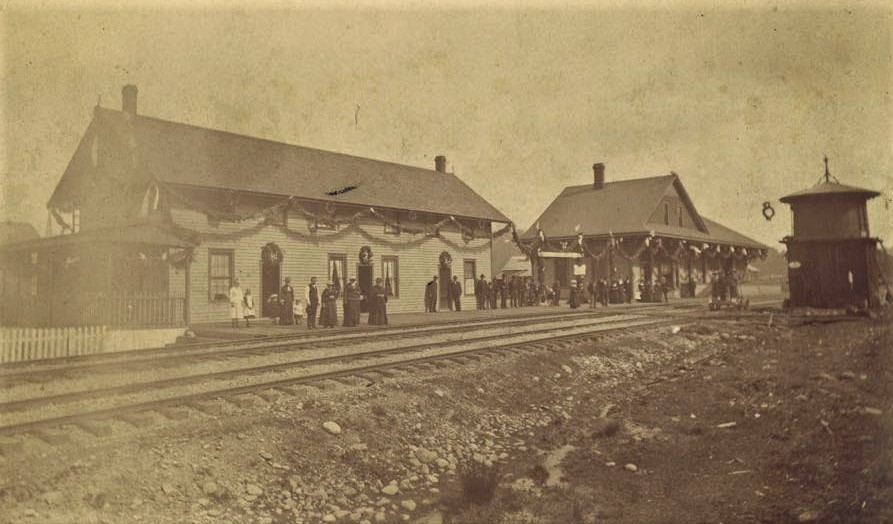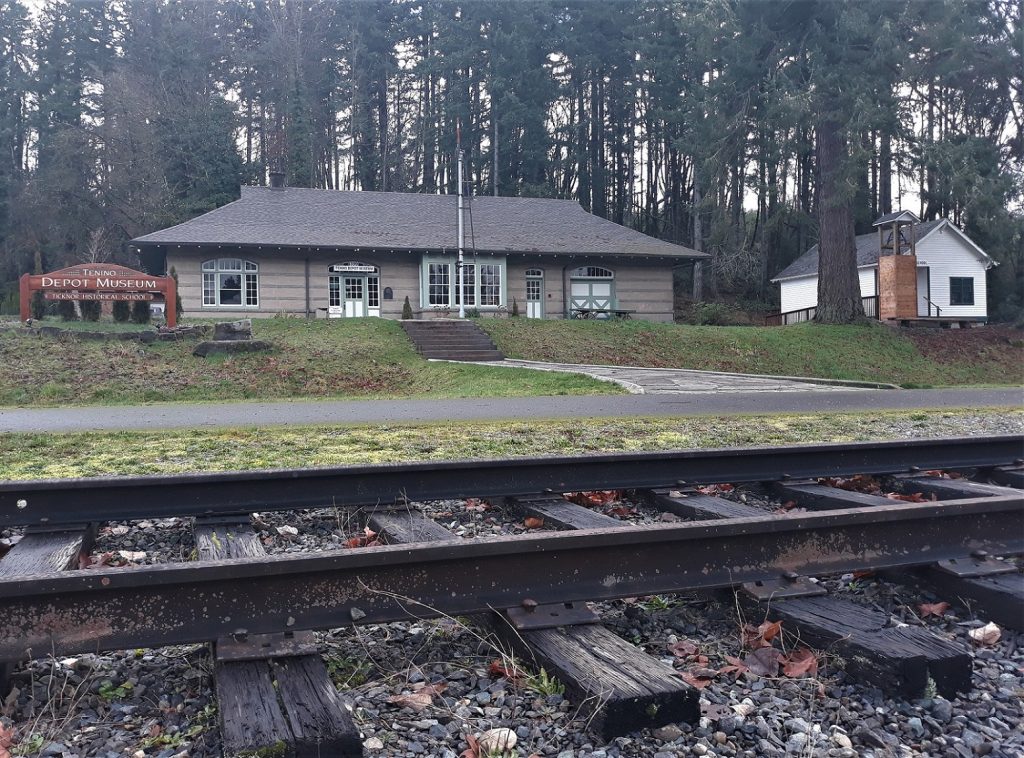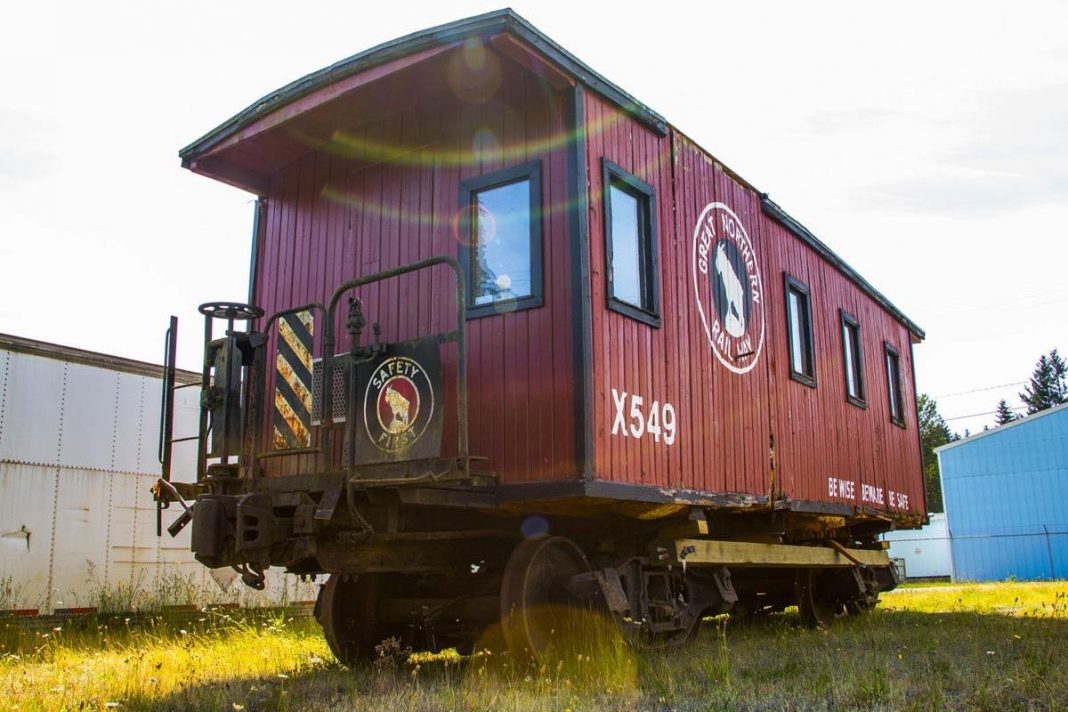The Tenino Caboose project will be moving forward with the help of a $10,000 Thurston County Heritage Grant to restore a Great Northern Railway caboose. The caboose was purchased at auction from its previous home at the Country Village Shopping Center in Bothell and has been sitting in storage at the public works building in Tenino. The Tenino Caboose began its service in Saint Cloud, Minnesota, November 1923. Built by the Great Northern Railway in their own shops, it was one of 47 built in that year, but later retired in 1967. The X549 caboose is 25 feet long, red with black trim and features the Great Northern logo.
The interior was modified to become an office, but if it were restored to its original condition a typical 25-foot caboose had two upper and lower bunks, a coal pot-bellied stove for cooking and warmth, a refrigerator, closets for tools, oil, and supplies, a toilet and sink.
Railroad enthusiast Donald Bowman is volunteering his services to work on the Caboose Project and explains the function of the caboose.
“The caboose afforded a train’s conductor an office for maintaining paperwork, waybills and a position to keep watch as it proceeded down the line,” explains Bowman. “The conductor made sure to spot abnormalities such as smoke from overheated wheel bearings, safety of brakemen running atop the train cars, or shifting cargo loads. After Westinghouse invented the airbrake in 1869, the caboose became an air pressure monitoring station for the end of the train.”
The budget for restoration is $25,000 thanks in part to the grant from the Thurston County Historic Commission. A quick survey revealed some wood damage in need or replacement. The cupola and interior need restoration to look like they did under its original service conditions.
Tenino Mayor Wayne Fournier explains his vision for the project: “We hope to begin reconstruction this spring and it will likely go on through the summer using primarily volunteer labor. The hope is to have a caboose on display near the Depot Museum to share in some of Tenino’s history as a railroad destination, the fact that Tenino’s founding is indelibly linked to the railway is something we would like to highlight.”

The Railroad essentially made Tenino. Just previous to the Northern Pacific Railroad (NPRR), the area was referred to as Hodgden Station for local homesteader Stephen Hodgden or Coal Bank for a local mine and was made up of a spattering of homesteads. The Northern Pacific Railroad commenced construction on a rail line from the Columbia River to the Puget Sound. They planned the track as far north as Hodgden Station and for the winter of 1872 the track ended there. Northern Pacific needed to decide whether to continue the line to Olympia, Tacoma, Seattle or some other point on the Puget Sound. According to Tenino City Historian Richard Edwards in his book titled The Naming of Tenino, during this period NPRR acquired controlling stock in the Oregon Steam Navigation Company (OSN). The OSN operated steamships on the Columbia River one of which was christened Tenino, most likely named for the Tenino Native Americans of Oregon. On October 12, 1872, a NPRR committee emerged from a meeting with the name Tenino for the new rail station. Edwards’ theory is that the name Tenino was partly chosen for marketing linking continuous travel by steam along the Columbia River by steamboat and overland by steam train as far north as the Tenino Station.
This bookending of Tenino is illustrated in Olympia’s Washington Standard November 16, 1872, “The extension of the North Pacific railroad, from the old Tenino to the new town of that name, was completed last Tuesday…”
Once the station was established, Tenino quickly gained its first store and hotel. A town was forming and all thanks to the railroad. It would be many years before Tenino really hit its stride with the discovery of local sandstone. However, in the boomtown years, Tenino continued to have a strong link with the railroad. Industries such as logging and quarrying relied on the railroad to ship product to the world.
Though trains no longer stop in Tenino, the Tenino Depot Museum works hard to keep railroad history available to the public. The addition of the caboose on the tracks below the museum will be another eye-catching incentive to visit the Museum. But how the caboose will be utilized is still unclear.

“It’s yet to be determined what exactly we will use the caboose for beyond being a showpiece,” explains Fournier. “Some have suggested it be a place for overnight stays, some as an office for a visitor center and some just want to see it historically reconstructed. As we work on this project, we could consider obtaining some passenger cars and maybe someday a steam engine for display. We also have more tracks that could be laid for further development of the display.”
It is interesting to note that the caboose will be placed on a section of track located on the very line where the original NPRR track was laid in 1872 and only two blocks from the end of the line where the first Depot was built.
Volunteers will complete the caboose project.
“The entire restoration team involved in this tremendous undertaking,” says Bowman. “We welcome any donations of new materials or offerings of assistance with labor.”
If anyone is interested in contributing, please contact the City of Tenino’s Mayors office.





















































